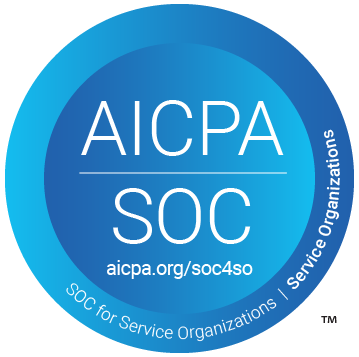Data cleansing and hygiene are crucial for effective marketing in today’s data-driven world. Ensuring that your data is accurate, reliable, and up-to-date is more important than ever to avoid waste and missed opportunities.
What is data hygiene or data cleansing?
Data hygiene is the process of cleaning and maintaining high-quality data to ensure its accuracy and completeness. It involves identifying and correcting errors, removing duplicate or irrelevant data, and updating outdated information. The process may also include standardizing data formats and verifying data against reliable sources to ensure its validity.
Some examples can be as minor as changing “Street” to “St.” for consistent formatting, but can be as major as removing consumers who are deceased or even correcting misspelled names.
What steps are being addressed as part of a data cleansing process?
Data hygiene and cleansing processes will vary by vendor, but here are methods and steps we take to ensure the file is ready for action:
- Standardizing formatting for naming and addresses.
- Example: Consistent capitalization and abbreviations.
- Removal of duplicate records
- Example: Kate Jones at 123 Main Street and Kathryn Jones at 123 Main St. are the same person.
- Filter out spam or fake entries.
- Example: You probably don’t have that many customers named Bart Simpson.
- Enrich the file to fill data gaps.
- Example: If a record is missing the town or zip code, the data point can be added.
- NCOALink® (National Change of Address) validation to ensure no change of address forms have been filed. This list is maintained by the United States Postal Service.
- CASS™ (Coding Accuracy Support System) Processing, a system also maintained by the United States Postal Service to ensure addresses are in a standard format and are complete and accurate.
Who can perform data hygiene?
This process is typically executed by third-party data providers or data science service providers like Speedeon. It’s critical to complete before kicking off any data services which may include data appends, data enrichment, or lookalike or response modeling.
Unfortunately, many brands attempt to execute data hygiene “the old-fashioned way.” This can include being reactive to customers that choose to proactively update their information when they move or change their names. It can also go a far costlier route.
Step 1 — Send a mailing out targeted to a list of consumers.
Step 2 — Wait for failed mailings to come back, and go back and update your CRM manually.
Yikes, that’s painful. Mailings are not cheap, so think about the high cost of a mailing executed with no pre-processing or hygiene. The cost of printing – and postage – add up, especially for brands with large lists.
How can I identify a high quality data hygiene provider?
- Accurate data: The process of data hygiene involves taking one dataset (yours) and comparing it against a superior dataset (theirs) to identify and correct errors. Based on the premise alone, it’s clear that high quality third-party data is an essential ingredient to the process. Data providers that don’t prioritize maintaining a highly accurate database may fail to detect errors in your file or worse, may change correct records to be incorrect.
- Fresh data: Continuing from the first point, perhaps the data was accurate in the past but has recently changed. As an example, up to 35 million people will move this year, nearly 60,000 every day. If the data isn’t refreshed regularly, even as frequently as daily, the vendor may miss a critical update.
Why is Data Hygiene Important?
Once you have invested in data hygiene, you can expect the following positive impact on your entire organization:
Accuracy
Data that is not accurate can lead to incorrect analysis and flawed decision making and analytics. By cleansing and validating your data, you can ensure that it is accurate and reliable. This, in turn, can lead to better outcomes and improved business performance.
Speed
Data cleansing and hygiene can help you to streamline your data management processes, making it easier to find and use the data you need. This can save you time and improve efficiency, allowing you to focus on other important aspects of your business.
Cost savings
Incorrect or duplicate data can lead to wasted resources and increased costs. By cleansing your data, you can reduce the likelihood of errors and save money in the long run. This can help you operate more efficiently and effectively, allowing you to reinvest resources into other areas of your business.
Compliance
Many industries are subject to regulations that require accurate and up-to-date data. By ensuring that your data is clean and hygienic, you can avoid compliance issues and potential fines. This can help you to maintain your reputation and ensure that your business is operating within the bounds of the law.
Improved decision-making
Clean data can help you to make better decisions, as you can rely on the accuracy and completeness of the data you are using. This can lead to better outcomes and improved business performance. With clean data, you can confidently make informed decisions, knowing that the data you’re using is accurate and reliable.
Customer satisfaction
Clean data can help you to better understand your customers and their needs. This can enable you to provide more personalized and targeted experiences, leading to higher levels of customer satisfaction. With clean data, you can develop a deeper understanding of your customers, their preferences, and their behavior, allowing you to deliver more relevant and effective marketing and customer experiences.
Data Hygiene is within reach for organizations of all sizes
Many organizations think that data hygiene and other data science processes are beyond their reach. But going back to the example of how “manual hygiene” is typically executed, it’s clear that brands can’t afford to skip data hygiene. The good news is that most of the processes to perform high quality data cleansing have been automated, making it far more accessible to organizations across the board.
Data cleansing and hygiene are crucial components of effective data management. They can help you to ensure accuracy, improve efficiency, save costs, maintain compliance, make better decisions, and increase customer satisfaction. By investing in a robust data cleansing and hygiene cleaning process, you can unlock the power of your data and drive better business outcomes.

